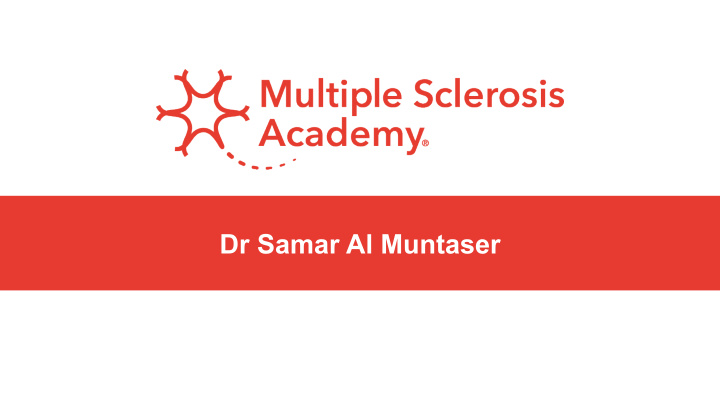



Dr Samar Al Muntaser
Background • There is a paucity of literature on the epidemiology, clinical characteristics and investigation tools for the pediatric age group with acquired demyelination syndromes. • Any disease that causes damage to the myelin sheath that slows or stops nerve signals is called a demyelinating disease. There are numbers of demyelinating diseases in childhood. Causes are multifactorial and include genetic, post infectious, post-immunization, and autoimmune (the body produces proteins, which damage its own tissue). • No cure exists for demyelinating diseases; early recognition, supportive care and early treatment with medications may help minimize and manage symptoms. Rehabilitation therapies are of particular importance.
Audit Objectives: • To determine the early symptoms of demyelinating syndromes. • To identify the types of demyelination • To assess the clinical investigation, MRI features of childhood demyelinating syndromes. • To evaluate the treatment modalities.
Methods: • It is a retrospective study done on all pediatric patients admitted with demyelinating syndromes from January 2010 until Jan 2019. • Data was collected from the patients records after approvals. • Patients were assessed regarding clinical presentation, investigation and management plans on regular basis.
Results: • Total numbers of patients diagnosed as demeylination syndrome: 13 patients. • Their age range at presentations : 29 months to 11 6/12 years. • 8 Patients were female and 5 males • All patients had normal birth history , normal development and family history.
• Triggering factors: 8 cases presented with history of fever or viral infection
Clinical presentations : NECK PAIN / DROWSY HEADACHE MOTOR TICS IRRITABLE NIL STIFFENESS 4 (30.7%) 3 (23%) 2 (15%) 1 (7.7%) 1 (7.7%) 1 (7.7%)
CNS examination: • Cranial nerves: 1 patient with squint and diplopia (7.6%) 1 patient with left facial weakness (7.6%) • Power: 6 patients with weakness (46%) • Tone: 1 was hypertonic (7.6%), 1was hypotonic (7.6%) and 84.6% were normal • Reflexes: 9 patients had brisk reflexes ( 69%), 7.6% hyporeflexia and 7.6% absent reflex • Gait • 7 patients had unsteady gait (53.8)
Investigations : • CSF: 1 patient with positive HSV1 3 with high protein • OCB/CSF: 3 were positive 3 were not done 7 were negative • AQ4: 5 negative 8 not done
Investiagtions : • EEG: 4 patients had focal slowing (30.7%) 1 epileptiform discharges (7.6%) 1 not done ( 7.6%) 7 were normal (53.8%) • MRI: 7 patients with signs of ADEMS (53.8%) 6 patients with signs of transverse myelitis (46%)
Diagnosis:
Management
Conclusions • Though demyelinating syndromes is rare in children , yet it seems to be under diagnosed due to paucity of investigations tools. • Re-audit of new patients prospectively with possible demyelination to implement other investigations tools not used previously, to standardize treatment care.
Recommend
More recommend